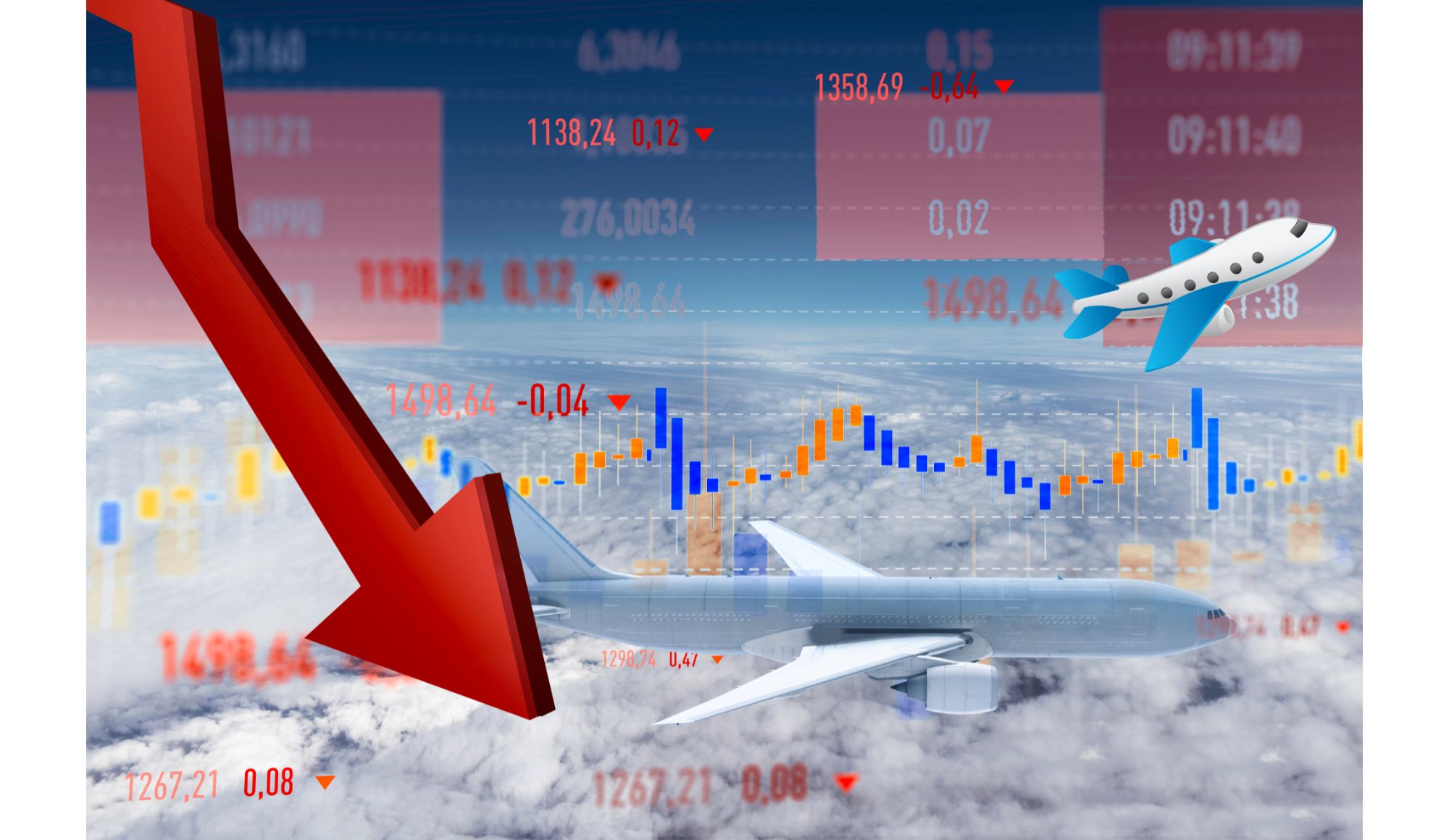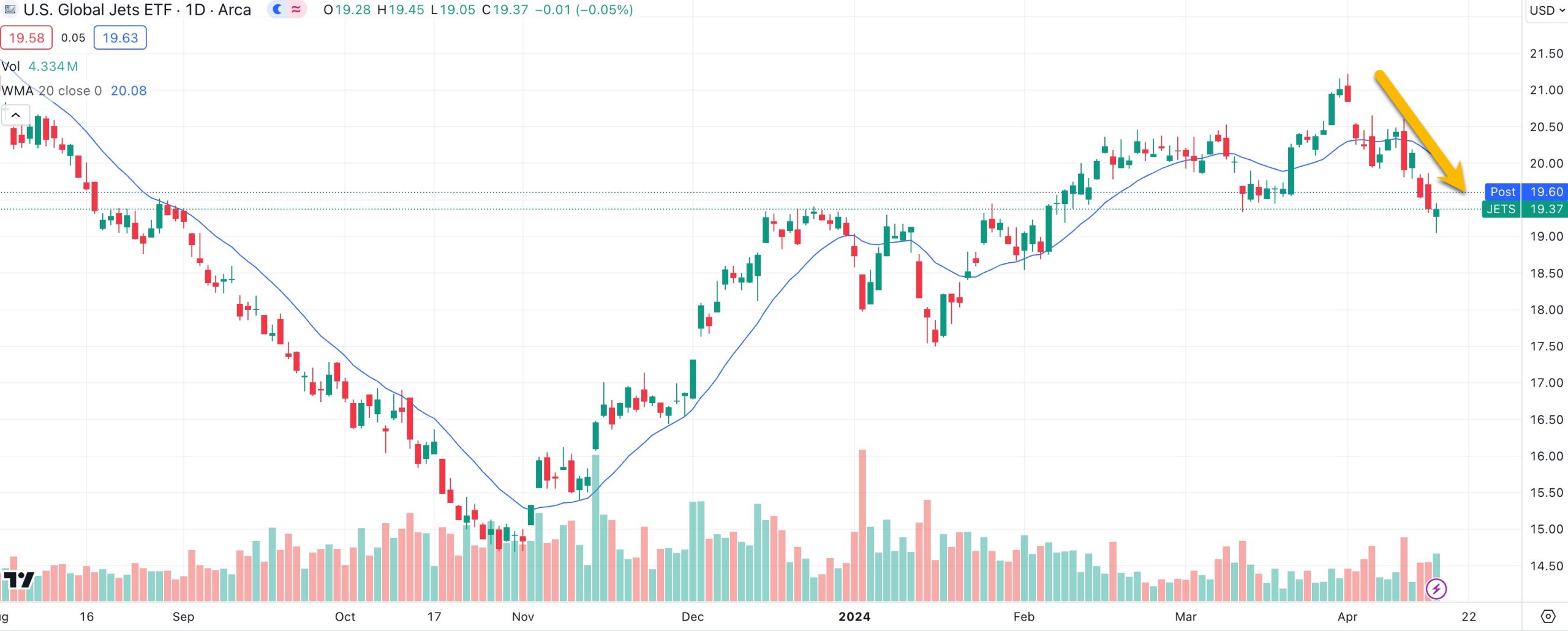Airline Stocks Plummet Now, What’s The Best Play?
It’s a strange phenomenon that at this time of year the airline industry, which you might think sees an uptick in travel spending, actually sees share prices nosedive.
More specifically, the share prices of airlines goes down even as those companies tend to make more money in the coming months as travel demand spikes.
So what’s the best way to play the nosedive, and how can we even make such a claim?
Key Points
- The transition from spring break to a pre-summer lull and Q1 financial disclosures often leads to a temporary decline in airline stocks despite upcoming high travel seasons.
- Volatile spring fuel prices and preemptive capacity expansions fail to immediately meet demand, squeezing profits and increasing operational risks due to weather disruptions.
- Historical data shows the JETS ETF typically falls by about 4% during this period, a pattern observed in 87% of years since its inception, emphasizing a persistent early summer downturn in airline stocks.
History Says Things Go South Now
Over the next 5 weeks, it turns out that the airline stocks ETF, JETS, has a history of declining 87% of the time since it first started trading and by no small amount either. JETS typically falls by about 4% over the coming month or so and the recent bearish chart action wouldn’t give bulls a whole lot of hope that this year will be different.
Why Does JETS Fall?
The late spring period—specifically from mid-April to May—often marks a transition between two major travel seasons:
Mid-April typically signals the end of the spring break travel surge. As schools reconvene, there is a noticeable dip in domestic travel, which can impact airline revenues.
Furthermore, late April and May are generally seen as off-peak times before the summer travel rush begins in late June. This lull can lead to reduced ticket prices and lower profit margins for airlines, affecting their stock values.
This period often coincides with Q1 earnings announcements for many airlines. If the preceding winter season was weak—possibly due to increased operational costs or lower-than-expected holiday travel—it can negatively influence investor sentiment and depress stock prices.
Furthermore, airlines are particularly sensitive to fluctuations in fuel prices. The spring months can sometimes see increased volatility in oil markets, influenced by geopolitical tensions or shifts in OPEC policies. Higher fuel costs without a corresponding rise in ticket prices can squeeze margins, leading to poorer financial performances reflected in stock prices.
Lastly, airlines may increase their capacity in anticipation of the summer season by adding more routes or increasing the frequency of flights. This expansion isn’t immediately met with demand in the lull before summer, potentially hurting profitability.
Spring weather, particularly in the U.S., can be unpredictable and may lead to operational disruptions. Severe weather events often leads to flight cancellations and delays, which are costly for airlines and can negatively impact stock prices.
The bottom line is the next 5 weeks is a notoriously weak period for airline stocks and JETS is among the best ways to play the downtrend, going bearish on it specifically.




